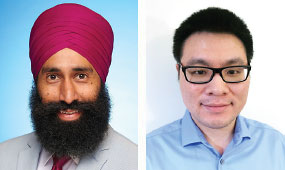Positive Psychology: Not a ‘Just Be Happy’ Approach to Physician Wellness in 2020
Abstract
The COVID-19 pandemic has altered the way that many people cope with general stress, but there are still steps you can take to protect against burnout and stay connected to yourself, your loved ones, and community.

Physician wellness is a topic that stirs up powerful emotions and impassioned debates, as it should. If we physicians who are supposed to be alleviating society’s suffering are ourselves suffering, then how can we do our jobs effectively? Moreover, every physician lost to burnout, substance use, or suicide impacts hundreds of patients and costs hundreds of thousands of dollars.
Moreover, maintaining wellness in 2020 has been difficult for even the most well-adjusted, socially supported, and financially secure individuals in our society. For others, 2020 has been utterly devastating. As if a pandemic weren’t enough, the emergence of very necessary racial unrest, uncontrollable wildfires up and down the entire West Coast, and an election year hanging in the balance have certainly exacerbated the overall feeling of uncertainty.
The national discourse initially focused on individual factors contributing to burnout, while more recent approaches have emphasized the need for large-scale changes at the systems level.
Positive psychology is a model that advocates for change at every level. It starts out with individual factors but progresses to include positive institutions and healthy group dynamics. At the individual level, sometimes positive psychology gets misconstrued as an unemphatic and superficial “just feel better or happier” model.
Trainees often express a version of the following sentiment: “I get that I’m supposed to be mindful and experience positive emotions, but what if my present moment is miserable?” The truth is that rather than being prescriptive, positive psychology at its core advocates for authentic happiness, which is achieved by living a meaningful life. It does not advocate for a “fake it until you make it” approach.
Ask yourself this question: If I was given a free hour today, how would I spend it? Would I do something that fills my soul, connects me to something deep within myself and the world around me, or opens my eyes to new possibilities through creativity, imagination, and insight? Would I spend time with the people whom I love and who love me back, who know me best, and who are honest enough to let me know when I’ve lost my way? Or would I just get more work done, sleep, complain past the point of relief and to the point of despair and hopelessness, sit in front of the television, or use drugs or alcohol?
The global pandemic has significantly altered the way that most of us cope with stress, leaving many of us feeling socially isolated, increasingly distracted with multitasking without a minute to breathe, and unable to engage in our preferred creative and outdoor activities. Yet, within this altered existence, there are still methods of coping that are likely to result in our feeling more deeply connected to ourselves, our loved ones, our communities, and our universe. On the contrary, so-called “quick fixes” will likely result in our feeling only more isolated, frustrated, and unhealthy in the long run despite their short-term appeal. Positive psychology would certainly advocate the former, and while doing so would advocate for a strengths-based, solution-focused model in which individuals can celebrate and enhance their strengths. This is in contrast to a weakness-based, problem-focused model, which is how traditional medicine and most of society operates.
Positive psychology has been associated with decreased risk of stroke and subjective pain and increased resilience, job satisfaction, coping, and improved health. A study in nuns by Deborah D. Danner and colleagues found that those expressing more positive emotion in their diaries lived an average of 10 years longer. Christopher Peterson and colleagues reported in the Journal of Positive Psychology on a survey of over 200 adults that found that those who had persevered through a serious medical or psychological condition reported increased appreciation of beauty, bravery, curiosity, fairness, willingness to forgive, gratitude, humor, kindness, love of learning, and spirituality. If our careers in medicine in 2020 are so toxic that we do not persevere, then we will not be able to experience the joys, resilience, and grit in overcoming difficulty. However, if our careers in medicine provide an optimal level of frustration and challenge, then we may greatly benefit from the experience.
At an institutional level, positive psychology is manifested by organizational virtues that encourage and enable individuals to pursue a meaningful life and career. The pandemic has undoubtedly impacted institutions financially, systemically, and logistically; yet, in the face of this adversity, many institutions have developed innovative solutions to boost morale, celebrate humanity, spread altruistic messaging, convey appreciation, and take care of physicians.
Institutions can thrive when they foster ongoing and continuous encouragement, mentorship in areas of interest and for personal support, facilitation of the mastery of skills and a sense of accomplishment of goals, set clearly defined roles and boundaries, empower employees to have appropriate levels of autonomy, prioritize both personal and professional growth, and create a sense of agency and effectiveness in their employees. Which of these are your institutions and organizations doing well, and which could use more work? And what can you do to facilitate change in your institution, your community, and your life? ■



